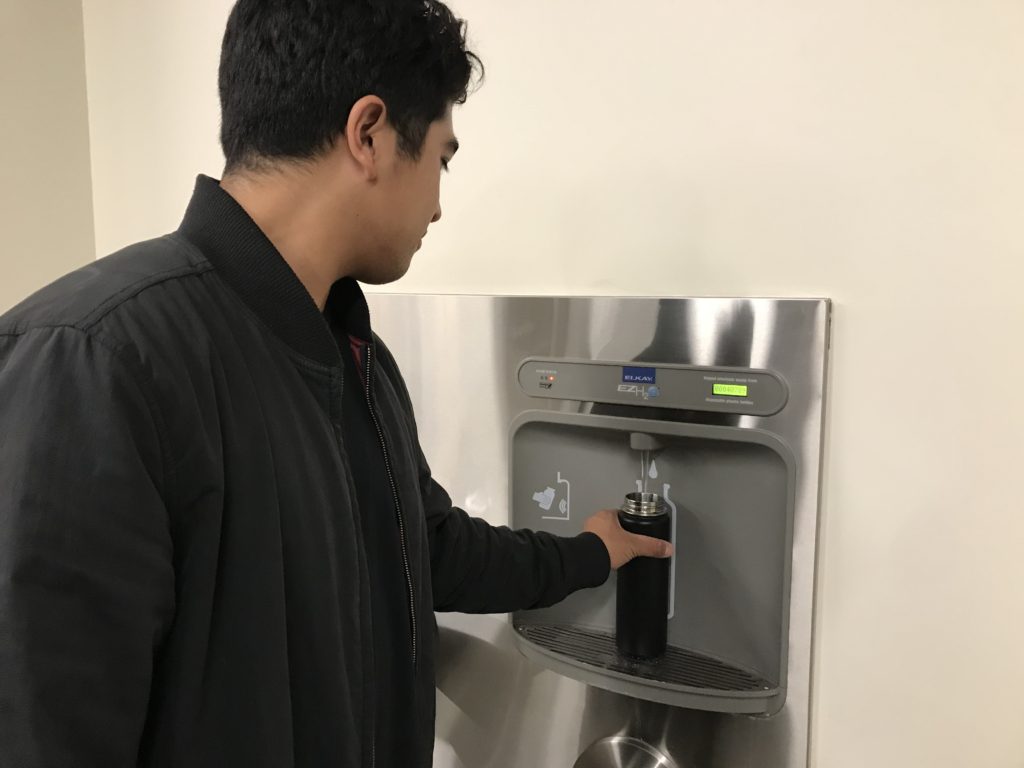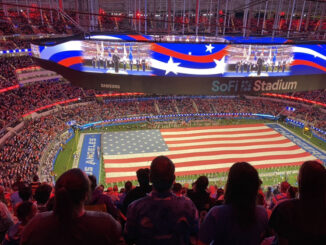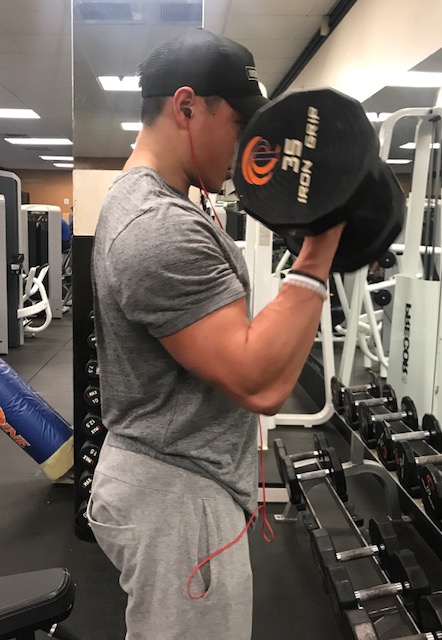
Misunderstandings over Pepperdine’s use of recycled water to keep lawns green have students fearing the tap water.
Rumors abound that the tap water is unhealthy and unsafe for usage or even that it is sewage water. The underlying fear leads some students to buy plastic water bottles whereas other students only trust the water refilling stations.
“I don’t really trust it,” junior biology major Sierra Smith said. “… I don’t really know what they do and I don’t trust them to do it. I’d would rather just buy my own water. So, absolutely not. I don’t even give it to my dog.”
A Pepp Post poll of 54 students found that two-thirds of students surveyed do not drink Pepperdine’s tap water, whereas one-third still does. Students question the cleanliness of the water for drinking, showering and cooking.
However, the tap water is completely safe, professors and administrators said.
How the water is safe
“Las Virgenes Municipal Water District provides the drinking water on campus,” Pepperdine Chemistry Professor Jane Ganske wrote in an email “… the water from this water district is well within federal guidelines for safe drinking water.”
Las Virgenes Municipal Water District routinely checks the water for heavy metals and other substances regulated under the Safe Water Drinking Act. The Las Virgenes water quality report, which includes guidelines for lead, mercury and other heavy metals, confirms the water to be within federal guidelines.
The sewage water rumors come from Pepperdine’s use of reclaimed water in the ponds at Alumni Park, which is used to water the grass.
California’s drought is decreasing water availability. For 38 years, in an attempt to preserve water on campus, Pepperdine created a water irrigation system in which they use recycled water for the grass and ponds. According to Pepperdine’s website, Pepperdine has saved 4 billion gallons of water since the construction of the campus.
According to the website, the recycled water is used for campus irrigation and the ponds on campus are regularly cleaned.
Both use water from the Malibu Mesa Water Treatment Facility, Ganske wrote.
Pepperdine uses a third treatment system, or tertiary treatment, for the ponds and for the sprinklers, Facilities Services Director Carly Mischke said. Pepperdine uses the tapia plant to filter sewage water to create clean, useable water. It removes all harmful substances.
The filtering system for the ponds and irrigation is completely separate from the Pepperdine tap water filtering system. There is no interaction between the closed water systems, Mischke said. The pond water is not potable but is suitable for irrigation.
“All of our water [potable water] comes from our local water district 29,” Mischke said. “We actually have two water tanks on campus that are responsible for that.”
Potable water at Pepperdine includes all water that comes out of faucets, showers and fountains, she said.
“I can confirm that Pepperdine’s tap water is safe to drink,” Mischke said.
Pepperdine’s water recycling system
Student opinions
The Pepp Post survey found that 60 percent said Pepperdine’s tap water is dirty and smells bad while 55 percent said they believe Pepperdine tap water draws from the same water as the sprinklers.
Austin Elliott, junior sports medicine major, said he heard that the Pepperdine water was unsanitary and would only drink the Pepperdine tap water as a last resort.
“I could see how people believe that it’s runoff sewage water,” Elliott said.
Smith said she heard the school uses UV light and microorganisms to eat the harmful components in the water in order to clean it. She does not trust the water because she got acne freshman year that she believed was from showering with the tap water. After moving off campus, her skin cleared up.
“My freshman year, everyone in our suite’s skin broke out because of the water,” Smith said.
Lauren Dettman, junior intercultural communication major, has heard several rumors.
“I have heard that it strips hair color out badly and that it tastes really bad,” Dettman said.
Though Dettman’s hair color never changed, she still believes the rumors. She added that the water tasted bad and that the sprinkler water smells bad. She assumes the tap water is dirty.
Water refill stations
Students are only willing to drink Pepperdine’s water if it’s through the water refilling stations the Student Government Association installed. However, most students do not realize that the refill stations serve the same water that comes out of kitchen and bathroom sinks.
“There is absolutely nothing different about the water bottle filling stations,” Mischke said. “All that water is coming from the exact same source.”
SGA implemented accessible water refilling stations around campus to reduce the purchase of plastic water bottles by encouraging students to use refillable water bottles, said Austin Welch, SGA president and senior political science and business major.
“We’ve seen a ton more plastic water bottles not being sold and students carrying around more reusable water bottles,” Welch said.
Students distrusted the normal water fountains because they feared it was tap water.
“I’d rather not drink from the water fountains,” Julian Kaizuka, junior sports administration major, said. “Usually people just use plastic water bottles and carry those around. But now that they have added the water refill stations, I would be down to use those. They look pretty legit.”
Hannah Lee, junior media production major, similarly preferred the water refilling stations.
“Its purpose is to refill water and sink water is just, I guess to like, to wash your hands,” Lee said.
Pepperdine’s goal to ‘go green’ backfires
Water rumors are causing some Pepperdine students to buy plastic water bottles around campus instead of using the tap water provided.
Junior finance major Luis Hurtado buys multiple plastic water bottles throughout the day.
“I do believe Pepperdine students don’t trust the water from the water fountains, not just because of the taste but because of the rumors they heard on campus,” Hurtado said. “I think it’s creating a huge recycling problem.”
He said many students also do not recycle their plastic water bottles.
“I trust the refilling stations but because they’re so limited, I just buy a bunch of water bottles throughout the day,” said Hannah Nanri, junior interpersonal communication major.
She believes the rumors and said students can be freaked out about the water and buy trusted brands instead.
“The refilling stations are meant for drinking; whereas, faucet water … is not water necessarily made for drinking,” Nanri said.
Sabrina Canario completed the reporting for this story under the supervision of Dr. Christina Littlefield and Dr. Theresa de los Santos in Jour 241 in fall 2018. Dr. Littlefield supervised the web story.




